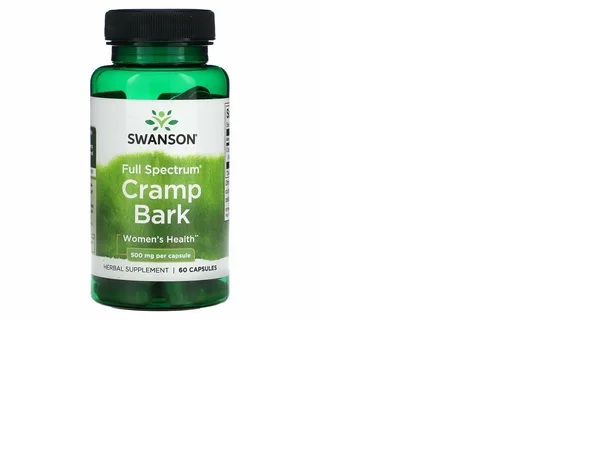Cramp bark, scientifically known as Viburnum opulus, is a flowering plant belonging to the Caprifoliaceae family. Native to Europe, northern Africa, and parts of Asia, cramp bark has been used for centuries in traditional herbal medicine for its potential therapeutic properties. Revered for its ability to alleviate muscle cramps, spasms, and menstrual discomfort, cramp bark supplements have gained popularity as a natural remedy for various health concerns. In this comprehensive guide, we’ll delve into the origins, nutritional composition, therapeutic applications, dosage recommendations, and safety considerations associated with cramp bark supplements.
Understanding Cramp Bark
Origins and Traditional Use
Cramp bark has a long history of use in traditional European herbal medicine, dating back to ancient times. The bark of the cramp bark tree was traditionally used by indigenous cultures to alleviate muscle cramps, menstrual cramps, and uterine spasms. Native American tribes also valued cramp bark for its medicinal properties and used it to address a variety of health issues, including digestive complaints and childbirth pains.
Nutritional Composition
Cramp bark contains a variety of bioactive compounds that contribute to its therapeutic effects, including valerenic acid, scopoletin, salicin, flavonoids, and tannins. These phytochemicals exert a range of pharmacological actions, including antispasmodic, analgesic, and anti-inflammatory effects. While specific nutritional data for cramp bark is limited, its diverse array of constituents underscores its potential health benefits.
Health Benefits of Cramp Bark Supplements
Muscle Relaxation
Cramp bark is renowned for its ability to relax smooth muscle tissue, making it an effective remedy for relieving muscle cramps, spasms, and tension. The antispasmodic properties of cramp bark are attributed to its ability to inhibit excessive muscle contractions and reduce muscle tightness. Cramp bark supplements may be used to alleviate cramping associated with conditions such as menstrual cramps, irritable bowel syndrome (IBS), and urinary tract spasms.
Menstrual Support
Cramp bark has long been used as a natural remedy for menstrual discomfort and dysmenorrhea (painful periods). The uterine-relaxing properties of cramp bark help alleviate uterine contractions and reduce menstrual cramps. Cramp bark supplements may be beneficial for women experiencing menstrual pain, bloating, and pelvic discomfort. Additionally, cramp bark may help regulate menstrual cycles and promote hormonal balance.
Digestive Relief
Cramp bark exhibits digestive-calming properties, which can help alleviate gastrointestinal spasms, cramps, and discomfort. By relaxing the smooth muscles of the digestive tract, cramp bark supplements may help relieve symptoms of digestive disorders such as irritable bowel syndrome (IBS), colitis, and gastritis. Cramp bark may also aid in the digestion of food and alleviate symptoms of indigestion and bloating.
Pain Management
Cramp bark possesses analgesic properties, which can help reduce pain and discomfort associated with various conditions. The salicin content of cramp bark acts as a natural pain reliever, similar to aspirin, by inhibiting pain-signaling pathways in the body. Cramp bark supplements may be used to alleviate headaches, muscle aches, joint pain, and nerve pain. Additionally, cramp bark may help reduce inflammation and swelling in affected tissues.
Urinary Tract Health
Cramp bark is traditionally used to support urinary tract health and alleviate urinary discomfort. The antispasmodic and diuretic properties of cramp bark help relax the muscles of the urinary tract and promote urine flow. Cramp bark supplements may be beneficial for individuals experiencing urinary urgency, frequency, or discomfort associated with urinary tract infections (UTIs) or bladder spasms.
Dosage Recommendations
Tinctures or Capsules
Cramp bark supplements are commonly available in various forms, including tinctures, capsules, teas, and extracts. Dosage recommendations may vary depending on the formulation and the specific health condition being targeted. However, a typical dosage range for cramp bark extract is 500-2000 milligrams per day. It is advisable to follow the dosage instructions provided on the product label or consult with a healthcare professional for personalized recommendations.
Safety Considerations
Generally Recognized as Safe
Cramp bark supplements are generally considered safe for most individuals when taken at recommended doses. However, some people may experience mild side effects, including gastrointestinal upset or allergic reactions. It is essential to start with a low dose and monitor for any adverse reactions. Pregnant or breastfeeding women should consult with a healthcare professional before using cramp bark supplements.
Potential Interactions
Cramp bark supplements may interact with certain medications or medical conditions. Individuals taking medications for blood pressure, diabetes, or blood thinning should exercise caution and consult with a healthcare professional before using cramp bark supplements. Additionally, individuals with known allergies to plants in the Caprifoliaceae family should avoid cramp bark supplements or use them under medical supervision.
Conclusion
Cramp bark supplements offer a range of potential health benefits, including muscle relaxation, menstrual support, digestive relief, pain management, and urinary tract health. With its long history of traditional use and diverse array of bioactive compounds, cramp bark continues to be valued as a natural remedy for addressing various health concerns. By incorporating cramp bark supplements into a balanced lifestyle, individuals can harness the medicinal properties of this remarkable botanical to support optimal health and well-being. As always, it’s essential to consult with a healthcare professional before starting any new supplement regimen.
- Benefits of Chuchuhuasi Supplements - March 30, 2024
- Benefits of Chinese Figwort Supplements - March 30, 2024
- Benefits of Chickweed Supplements - March 21, 2024

